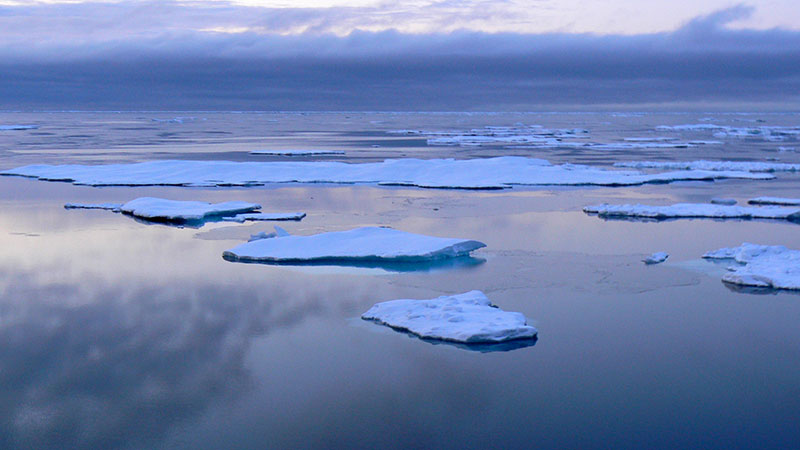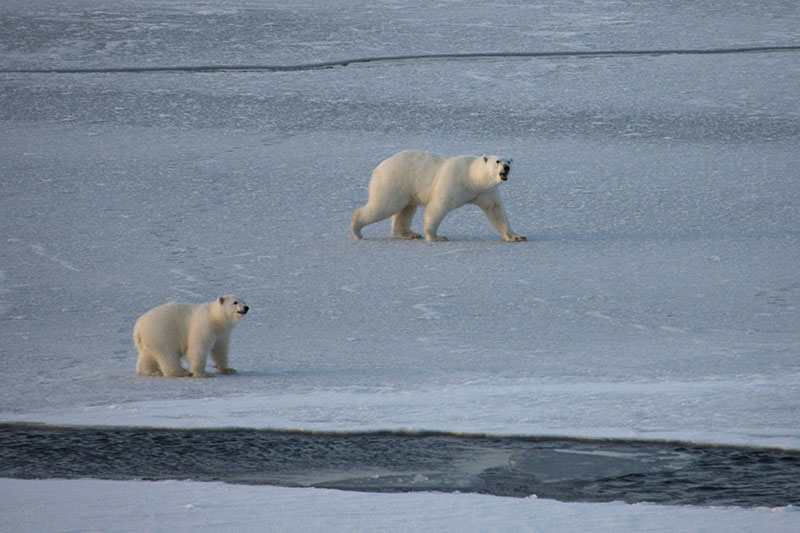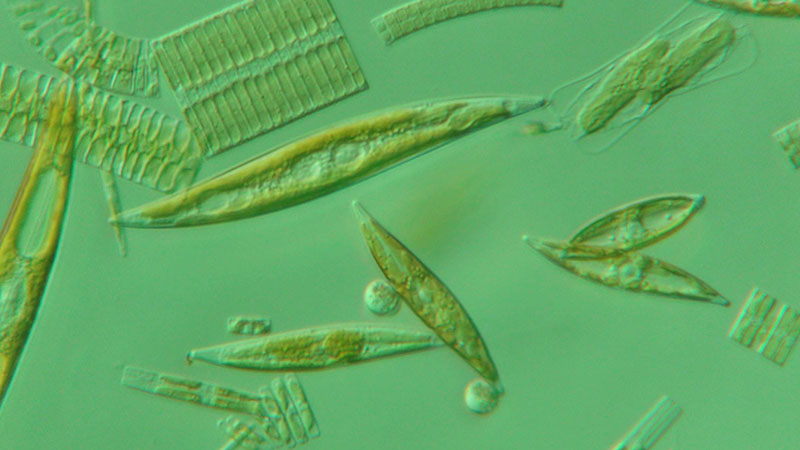
by Katrin Iken, Professor in Marine Biology, School of Fisheries and Ocean Sciences, University of Alaska Fairbanks
Russ Hopcroft, Professor, Institute of Marine Science, University of Alaska Fairbanks

Open water in-between ice, also called meltponds, is a strong indication of low ice cover. Image courtesy of Katrin Iken, University of Alaska Fairbanks. Download larger version (1.9 MB).
The Arctic Ocean is one of the most remote locations on Earth, as well as the region where the impact of climate change may be most strongly expressed. In the last two decades, concerns about enhanced and rapid environmental changes have put the Arctic into the spotlight of scientific and public attention. Countless news stories, scientific publications, and reports from Arctic peoples have documented the ever-warming air and water temperatures in the Arctic; the tremendous loss of summer sea ice cover; and the thinning of sea ice that creates problems for marine mammals and humans alike to use it as a platform for resting, feeding, breeding, and hunting.
Decadal trends and ongoing climate change, plus a string of record low-ice years this century, have led to predictions that the Arctic Ocean may become ice-free during the summers by 2030. This rapid rate of environmental change makes the documentation of the current species composition, community structures, and habitat interactions of the Arctic marine biota an urgent challenge, particularly in least-explored regions such as the Chukchi Borderlands.

These polar bears are on very thin ice, surrounded by cracks and leads, which make it very hard for them to travel. Image courtesy of Katrin Iken, University of Alaska Fairbanks. Download larger version (1.7 MB).
The Pacific-Arctic region of the Chukchi Sea and the Chukchi Borderlands, in particular, is most intensely affected by ongoing climatic changes. The Chukchi Borderland is located amidst the region of the most dramatic sea ice meltdown in the last two decades, thus making the region a prime target for climate change-related studies. This ice melt is also coupled with the complex mixing of Arctic, Pacific, and Atlantic waters in the Chukchi Borderland region. Both the Atlantic and Pacific waters are becoming increasingly warmer and additionally, the Pacific water is considerably less salty because of high freshwater inflow from river discharge, high precipitation, and rapid permafrost and glacial melt.
While we have some appreciation of the physical processes associated with these climate change effects, our understanding of biological responses is very poor because very few programs have sampled thoroughly in the Chukchi Borderland region. Change in the nutrient-rich Pacific water mass properties over the Chukchi Borderland will strongly affect the growth and production of the tiny microalgae associated with sea ice (sea ice algae) and the water column (phytoplankton) that build the base of the food web.
Hydrographic changes also have great potential to create a stressful environment for many highly adapted Arctic species. These changes could foster conditions that become more tolerable for Pacific immigrant species that would then start to compete for resources with the Arctic species. Should marine mammals such as seals or polar bears be excluded from the region because they no longer have a sea ice platform for resting and hunting, this would constitute an important loss of top predators and unprecedented changes to the marine food web.
We will only be able to assess these ecosystem changes if we have an understanding of the current situation. Only then will we be able to determine who are the winners and the losers of these climatic changes and how such changes will percolate through the system.

A microscopic view of ice algae from the Arctic. Image courtesy of Rolf Gradinger, University of Alaska Fairbanks. Download larger version (1.1 MB).